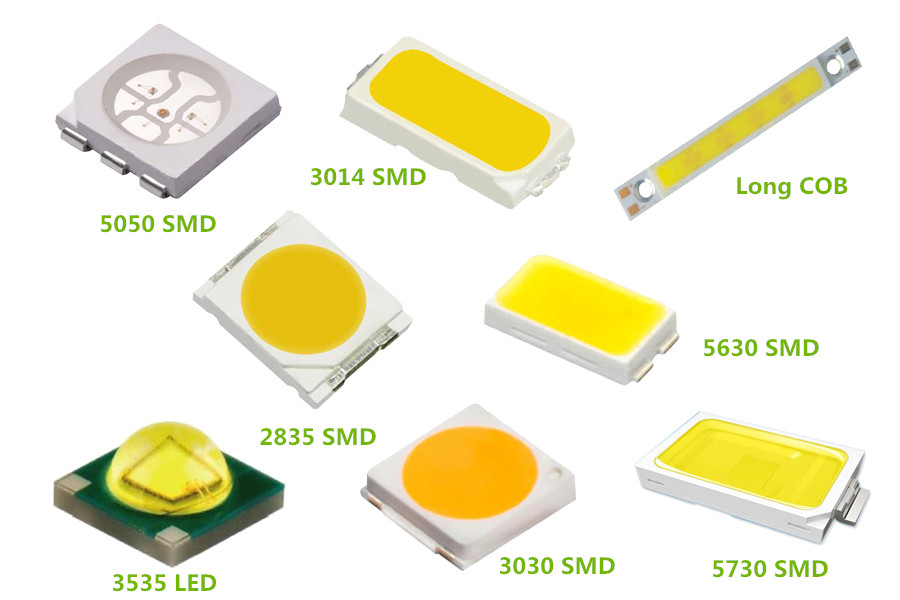Ive drawn up a model of the LED strip i have in mind. It is based on a 5.7mm long SMD LEDs, prefferebly 5736’s, but they arent too common, i may have to go with 5730s. I was going to go with the 5050s, or another LED but packed tighter, however, 5050s are a tad bit too big for the rails without going into multi layer PCBs which are just insanely expensive. I was also going to go with packing heaps of LEDs on the strip by turning them sideways, but, same reason, i couldnt, so ultimately this will end up being a modular larger version of the exact same strip. not that its bad or anything. this strip though will utilize parallel series of 4 instead of 3, meaning it can be safely run at 12v unregulated.
This design should fit about 14 leds per 10mm, which would be about 74-78 57xx leds (5.7mm long), so, being pessimistic about the space lost joining up segments, lets say its 70 leds per 540mm strip.
the 5730 (since i cant find a datasheet for the 36) has specs of 2.8v-3.6v at 150ma, so, ideally we should get 2.8v 150ma but it might require as much as 3.6v, either way, once you hit 150ma, your at 100% output.
this means you have a range of 2.8*0.15 to 3.6*0.15 = 0.42W to 0.54W per led, which, multiplied by a pessimistic number which is 70, gives us a potential range of 29.4W to 37.8W PER STRIP, this is compared to the ~9.5-9.9W you can squeeze out of the current strips. one strip will output more in its safe operating range than both the kit ones could together.
70 leds equates to a running current of about 2.6A (its parallel series of 4 LEDS which would have about 12v across but are still 150ma per series set).
i think that kind of value is attainable with the XL4015 stepdown converter, though youll likely want to sit much lower than that. The same rules still apply, bigger LEDS arent automatically more heat tolerant, most likely it will end up being that power is limited by the PCB thermal conductivity even though the LEDs are built to run that hard. most likely 15W out of each strip will be sufficiently bright for most anyone.
Now, onto the important stuff. Here is the circuit type i intend to use, im going with version 1. one inaccuracy of the 3D model i gave is that the connection from the first and last LED in each series , it will run out from underneath the terminal and little to none will stick out, however they will be given that space anyway.
Here is a nice picture of some LEDs
AND
I just realized now that i searched with the intention of buying, that i can acquire 200pcs of these 5730 leds for just $2aud, meaning the cost per LED is about 1 cent. perhaps even less depending on where you get them, i think i saw 100 for 47 cents, however, many of the listings use both 5630 and 5730 in the title, so, im just making sure i dont get tricked into buying the wrong one.
On a parting note, the benefit of the strip being modular is that i can use a homemade reflow oven to build these strips myself. And the low cost of the LEDs individually means that cost will mostly just be going into getting the aluminium PCB, which for this i can etch myself using my old 3D printer with a dremel, assuming its even neccesary. Im going to make 2 series sets of the LEDs, adhere them to some aluminium sheet to simulate the back plate of the monitor, and see how regular etched copper clad PCB pans out at the desired power output, if it turns out that i dont even need to use aluminium, then i can start producing these things immediately! at least, in the small scale. Just something to keep in mind, the kit strips anyone here and myself currently uses, are regular fiberglass PCB, we never hit the thermal limits of the LED strips, just the maximum operating power limits, so, its safe to assume that the neccesary 50% bump in power from what we currently have (18-19W total to 30W), wont need anything special either.




I love your blog.. very nice colors& theme.